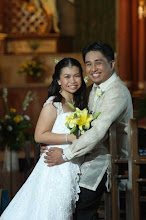The Lhasa Apso is a small, hardy breed with a beautiful cloak of hair that parts down their back from head to tail. Their temperament is unique: joyful and mischievous, dignified and aloof. An independent breed, the Lhasa's goal in life is not necessarily to please their master. Popular in the show ring, the breed also excels at activities that provide constant challenges, such as agility.
Lhasas come in many colors from light blonde to black. Black tippings on ears and face are also common.
A Look Back
The Lhasa Apso originated hundreds of years ago in the isolated reaches of the Himalayan Mountains. It functioned primarily as a household sentinel, guarding homes of Tibetan nobility and Buddhist monasteries, particularly in or near the sacred city of Lhasa. In 1933, C. Suydam Cutting introduced the first Lhasas to the U.S. gifts from the 13th Dalai Lama.
Character
Gay and assertive, but chary of strangers.
Size
Variable, but about 10 inches or 11 inches at shoulder for dogs, bitches slightly smaller.
Color
All colors equally acceptable with or without dark tips to ears and beard.
Body Shape
The length from point of shoulders to point of buttocks longer than height at withers, well ribbed up, strong loin, well-developed quarters and thighs.
Coat
Heavy, straight, hard, not woolly nor silky, of good length, and very dense.
Mouth and Muzzle
The preferred bite is either level or slightly undershot. Muzzle of medium length; a square muzzle is objectionable.
Head
Heavy head furnishings with good fall over eyes, good whiskers and beard; skull narrow, falling away behind the eyes in a marked degree, not quite flat, but not domed or apple-shaped; straight foreface of fair length. Nose black, the length from tip of nose to eye to be roughly about one-third of the total length from nose to back of skull.
Eyes
Dark brown, neither very large and full, nor very small and sunk.
Ears
Pendant, heavily feathered.
Legs
Forelegs straight; both forelegs and hind legs heavily furnished with hair.
Feet
Well feathered, should be round and catlike, with good pads.
Tail and Carriage
Well feathered, should be carried well over back in a screw; there may be a kink at the end. A low carriage of stern is a serious fault.
Here’s something different… PAW-shion Show at the Doggie Fun Fair 2 has an
interesting theme. Humans will be dressed as their dogs and dogs will come
as th...
12 years ago


0 comments:
Post a Comment